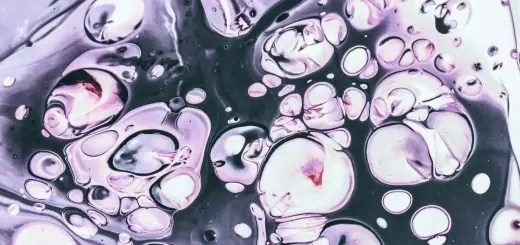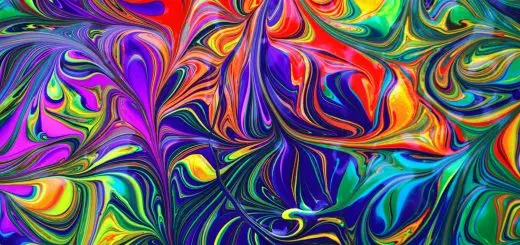The Maori Haka Pōwhiri: Traditional Welcome Ceremonies

Looking for more amazing products? Check out our online store and explore our collection here! Happy shopping!
Before diving in, please note: This post is for informational purposes only. If you’d like to know more about how we approach topics, feel free to check out our friendly Disclaimer Page.
Hey there, amazing readers! 
We’re committed to delivering quality posts, and your support (even just sticking around despite the ads) means everything to us. So, bear with us, and thanks for helping us keep the good vibes rolling. Now, on to the fun stuff!
TRANSLATE BUTTON AT THE END OF THE ARTICLE
Overview: The Maori Haka Pōwhiri: Traditional Welcome Ceremonies
The Maori Haka Pōwhiri is a traditional welcome ceremony performed by the indigenous people of New Zealand, the Maori.
This powerful and iconic display of culture and hospitality plays a significant role in Maori society and is often performed to welcome guests onto ancestral lands or during important events.
The Haka Pōwhiri combines music, dance, and chanting to create a unique and captivating experience that showcases the rich cultural heritage of the Maori people.
In this article, we will explore the historical significance, cultural importance, elements, etiquette, key participants, and symbolism associated with the Maori Haka Pōwhiri.
We will also delve into its evolution in modern times and discuss the cultural impact and importance of preserving this tradition for future generations.
Introduction to the Maori Haka Pōwhiri
The Maori Haka Pōwhiri, commonly known as simply Haka, is a traditional ceremonial dance that serves as a form of greeting and welcome in Maori culture.
It is performed by a group of individuals, often men, who come together to demonstrate their unity and strength.
The Haka is characterized by vigorous movements, rhythmic chanting, and powerful facial expressions, all of which create a visually striking performance.
This cultural practice has gained international recognition and is often associated with New Zealand’s national rugby team, the All Blacks.
However, it is essential to note that the Haka Pōwhiri is not exclusive to sports events and holds deep cultural significance beyond its popular portrayal.
Historical Significance of the Haka Pōwhiri
The Haka Pōwhiri dates back centuries and has its roots in Maori mythology and history.
It is believed to have originated as a way to intimidate enemies during warfare, instilling fear and showcasing the strength and unity of the Maori warriors.
Over time, the Haka Pōwhiri evolved into a ceremonial practice used to welcome visitors onto Maori ancestral lands.
It served as a display of respect, a means of establishing peaceful intentions, and a way to acknowledge the guests’ significance.
The Haka Pōwhiri also played a role in strengthening the bonds between different Maori tribes and fostering a sense of unity among the community.
Understanding the Cultural Significance of the Haka Pōwhiri
The Haka Pōwhiri holds immense cultural significance for the Maori people.
It serves as a way to maintain and pass down ancestral traditions, ensuring the preservation of cultural identity and values.
The performance of the Haka Pōwhiri is seen as a sacred act, connecting the past, present, and future generations.
It is an expression of cultural pride, strength, and unity.
The Haka Pōwhiri is also a reflection of the Maori worldview, encompassing spirituality, history, and social structures.
By participating in the Haka Pōwhiri, individuals reaffirm their connection to their ancestors, land, and community, reinforcing their place within the larger Maori cultural tapestry.
Elements and Structure of the Haka Pōwhiri
The Haka Pōwhiri consists of various elements that contribute to its unique structure.
The ceremony typically begins with a wero, a challenge performed by a male warrior.
The wero is intended to determine the intentions and respect of the guests and ensure their peaceful entry onto Maori land.
Following the wero, there is a karanga, a series of calls made by female hosts to invite the guests onto the marae (the traditional meeting place).
The guests respond with a reply call known as whaikorero.
After the karanga and whaikorero, the Powhiri (the actual welcome) commences.
This involves the performance of the Haka, accompanied by chanting and various movements.
The Haka Pōwhiri is typically led by a kaikaranga (female caller) and a kaiwhakahaere (male leader), who guide the participants through the sequence of actions.
The Haka Pōwhiri concludes with the hongi, a traditional greeting where participants press their noses and foreheads together, symbolizing the sharing of breath and the mingling of spirits.
Etiquette and Protocol During a Haka Pōwhiri
When participating in a Haka Pōwhiri, it is crucial to observe proper etiquette and protocol to show respect for Maori culture and traditions.
Guests are expected to follow the guidance of their hosts, particularly during the wero and karanga.
It is customary for guests to respond to the karanga with a formal reply, expressing gratitude and acknowledging the hosts’ welcome.
During the Haka performance, guests are encouraged to watch and appreciate the display without interrupting or imitating the movements unless explicitly invited to participate.
Other points of etiquette include dressing appropriately, removing shoes before entering the marae, and maintaining a respectful and attentive demeanor throughout the ceremony.
Following the hongi, guests may be invited to share a traditional meal known as a kai, providing a further opportunity for social interaction and cultural exchange.
Key Participants in the Haka Pōwhiri
The Haka Pōwhiri involves several key participants, each with a defined role to ensure the smooth execution of the ceremony.
The kaikaranga, or female caller, is responsible for leading the karanga, inviting the guests onto the marae, and setting the tone for the ceremony.
The kaiwhakahaere, or male leader, works in conjunction with the kaikaranga, guiding the participants through the Haka performance and other protocol elements.
The warriors who perform the wero play a vital role in the Haka Pōwhiri.
They are responsible for issuing the challenge and assessing the guests’ peaceful intentions.
The whaikorero speakers, both male and female, deliver speeches that acknowledge the guests, express gratitude, and establish a sense of connection and understanding.
The participants in the Haka itself showcase the strength, unity, and cultural prowess of the Maori community.
Traditional Instruments Used in the Haka Pōwhiri
In addition to movement and chanting, the Haka Pōwhiri incorporates several traditional instruments to enhance the auditory experience and reinforce the ceremonial atmosphere.
One of the most recognizable instruments is the pūkāea, a conch shell trumpet.
The pūkāea is blown at the beginning and end of the Haka Pōwhiri to signal the start and conclusion of the ceremony.
Another prominent instrument is the pūtātara, a wooden trumpet often carved with intricate designs.
The pūtātara is played during significant moments of the Haka Pōwhiri, adding a distinctive and resonant sound.
Other instruments, such as the pahu (drum) and koauau (flute), may also be used to provide rhythmic accompaniment and melodic variations.
Symbolism and Meaning Behind the Haka Pōwhiri Movements
The movements performed during the Haka Pōwhiri are not merely displays of physical prowess but carry deep symbolic meaning.
The forceful stomping and rhythmic slapping of the body represent the heartbeat of the community, conveying strength and unity.
The protrusion of the tongue, bulging eyes, and facial expressions are intended to intimidate potential adversaries while showcasing the warrior spirit of the Maori.
The synchronized movements and group choreography reflect the importance of collective effort and unity within the Maori community.
Each gesture, step, and chant carries ancestral wisdom and cultural significance, passed down through generations.
The Haka Pōwhiri is both a reminder of past struggles and triumphs and a celebration of cultural identity and heritage.
Evolution of the Haka Pōwhiri in Modern Times
In modern times, the Haka Pōwhiri has evolved beyond its traditional context and is now performed on various occasions, both within and outside of New Zealand.
It has become a symbol of Maori culture and is often showcased at events celebrating multiculturalism, sports tournaments, and cultural festivals.
The Haka has gained global recognition through its association with the All Blacks rugby team, who perform a specially composed Haka before their matches.
While the Haka Pōwhiri has embraced modern influences, it remains deeply rooted in tradition, and efforts are made to preserve its authenticity and cultural significance.
Maori communities continue to pass down the rituals and teachings associated with the Haka Pōwhiri to younger generations, ensuring its continuity and relevance in the face of changing times.
Cultural Impact and Importance of the Haka Pōwhiri
The Haka Pōwhiri holds significant cultural impact and importance for the Maori people.
It serves as a powerful expression of cultural identity, pride, and unity, fostering a sense of belonging and solidarity within the community.
The Haka Pōwhiri has also been instrumental in raising global awareness and understanding of Maori culture, contributing to the preservation and appreciation of indigenous traditions.
Furthermore, the Haka Pōwhiri has become a symbol of national identity for New Zealand, transcending cultural boundaries and fostering a shared sense of pride among all residents of the country.
It has become an iconic representation of the unique cultural heritage that sets New Zealand apart on the global stage.
Conclusion: Preserving the Maori Haka Pōwhiri for Generations
The Maori Haka Pōwhiri is a cultural treasure that embodies the rich history, traditions, and values of the Maori people.
Its significance stretches beyond its portrayal in popular culture, representing a deep connection to ancestral lands and a vibrant cultural identity.
As the world continues to evolve, it is paramount to preserve and honor the Haka Pōwhiri, ensuring its continuation for future generations.
Efforts must be made to educate and raise awareness about the cultural significance and protocols associated with the Haka Pōwhiri.
By doing so, we can foster respect, understanding, and appreciation for Maori culture, both within New Zealand and internationally.
Embracing the Haka Pōwhiri as a symbol of unity and strength can serve as a reminder of the importance of cultural heritage and the power of traditions in shaping our collective identity.

The Enlightenment Journey is a remarkable collection of writings authored by a distinguished group of experts in the fields of spirituality, new age, and esoteric knowledge.
This anthology features a diverse assembly of well-experienced authors who bring their profound insights and credible perspectives to the forefront.
Each contributor possesses a wealth of knowledge and wisdom, making them authorities in their respective domains.
Together, they offer readers a transformative journey into the realms of spiritual growth, self-discovery, and esoteric enlightenment.
The Enlightenment Journey is a testament to the collective expertise of these luminaries, providing readers with a rich tapestry of ideas and information to illuminate their spiritual path.
Our Diverse Expertise
While our primary focus is on spirituality and esotericism, we are equally passionate about exploring a wide range of other topics and niches 

To ensure we provide the most accurate and valuable insights, we collaborate with trusted experts in their respective domains 
Our blog originally focused on spirituality and metaphysics, but we’ve since expanded to cover a wide range of niches. Don’t worry—we continue to publish a lot of articles on spirituality! Frequently visit our blog to explore our diverse content and stay tuned for more insightful reads.
Hey there, amazing reader! 
Check out our store here and take a peek at some of our featured products below! Thanks for being awesome!












